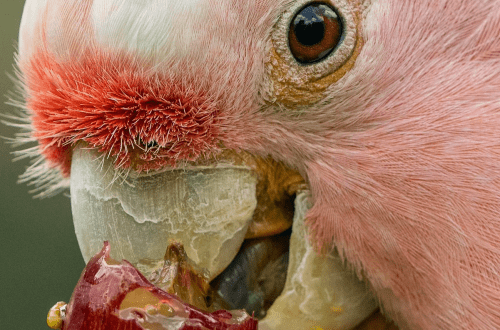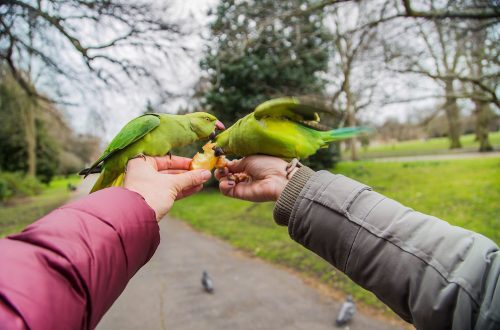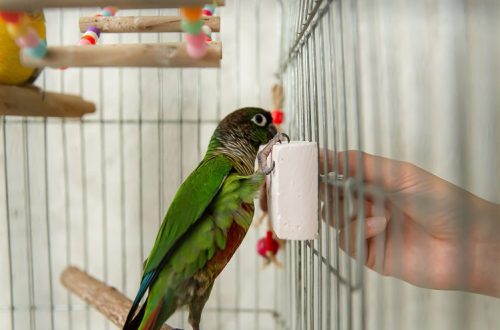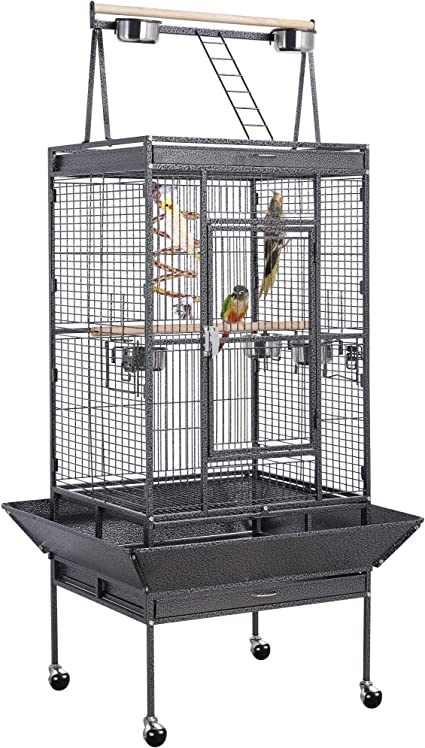
Parrot Cage
You have decided to purchase a budgerigar. And one of the first steps is choosing a cage for a new family member. When we choose a particular bird, we do not only look at its appearance and color scheme of plumage, its health, temperament, gender are important to us, we try to take into account all the nuances, from our emotional state from contact with it, to observing the behavior of a parrot in his familiar environment.
Someone needs a talkative tomboy, and someone is looking for a singing, affectionate shovel. But despite the variety of characters, colors of budgerigars, they all need a large and safe home, where they will feel cozy and comfortable.
Choosing a cage for a budgerigar is a very responsible task, because you choose a house in which the bird will live all his life, a place where he will spend a lot of time.
Place for the cage
To create optimal conditions for keeping a budgerigar and in order to avoid inconvenience for other family members, you should first of all consider where the cage will be located: in a private house or in an apartment, in which of the rooms, it is desirable that this be the part of the house / apartment where family or most often the most visited room, parrots are very sociable and sociable birds and they will gladly take part in your conversations, comment on television programs and sing along to the radio.
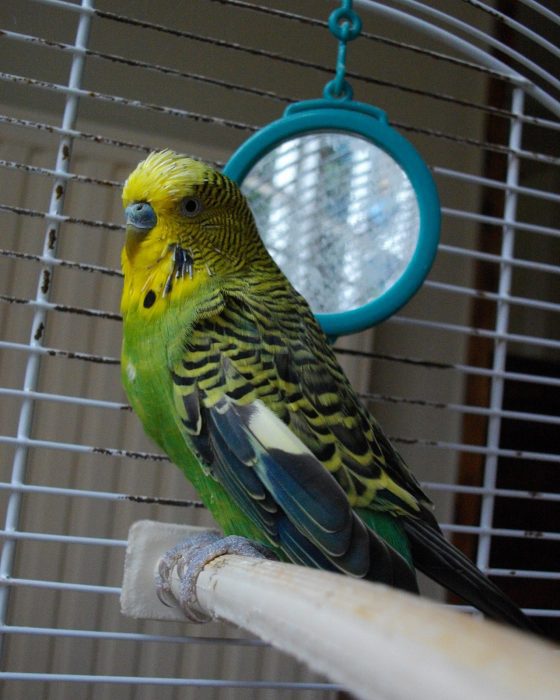
For the peace of the parrot, the permanent place of the cage is important; you should not often move it around the rooms. He must know that his house will not go anywhere and during the walk the bird will readily return to its shelter. Consider the obligatory absence of drafts and access to sunlight, but without direct rays, and the cage should also be installed so that one side adjoins the wall. You can calculate the correct position of the cage with the help of perches, they should be at the level of your eyes, this will allow you to contact the budgerigar more often and with this arrangement the bird will feel most comfortable, if the cage is too high, this will lead to run wild, aggression and the shyness of the parrot, and putting it on the floor is strongly discouraged, the bird will be in constant stress, which will lead to disastrous consequences.
Shape and size
It is not difficult to buy a cage for a budgerigar; pet stores provide a wide range of various shapes and sizes.
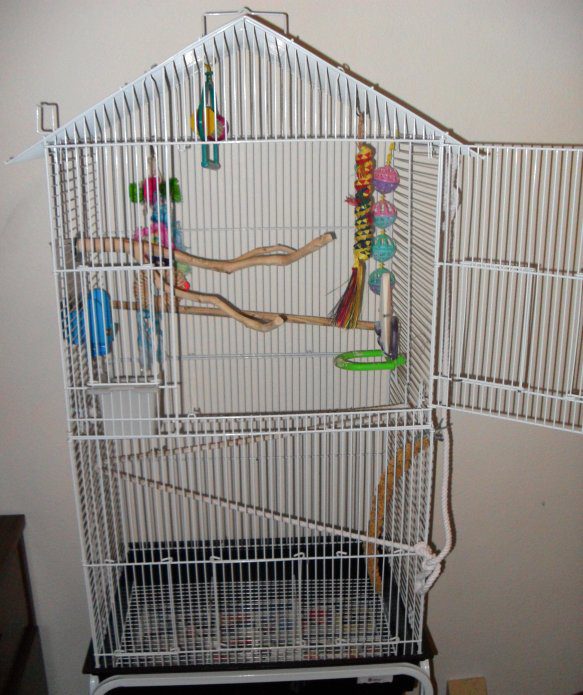
Cell Size Requirements:
– the cage should be spacious, comfortable and suitable for budgerigars. In order for the bird to easily spread its wings, its minimum size for one parrot is: 40 cm long, 30 cm wide and 50 cm high, for two budgerigars, the cage size must be 60 cm long and 40 cm wide , in height from 60 cm. Recommended standard: the length of the cage should be greater than the width and height, so the budgerigar can fly from perch to perch, and not just jump up and down;
– a small cage for a budgerigar may be suitable only for long walks;
– a small cage is useful as a carrier if the bird needs to be moved to another place of residence or a visit to the ornithologist is planned;
– a cage that is too large can be unsafe if the distance between the bars is more than 1,5 cm, and the diameter of the perches exceeds 2 cm. As a rule, cages for medium parrots have similar parameters.
Having decided on the location of the cage in your house, you will know what maximum size you can count on when buying it, while the rest of the requirements regarding the parrot house are unchanged for all novice owners:
– round and curly cages are not recommended to buy, since the lack of a corner where the bird could rest and just watch negatively affects the nervous system of the budgerigar, it becomes disoriented in space, which in turn affects health and its emotional state. In a round cage, the parrot feels unprotected, he has no place where he could retire. Curly cages are traumatic for such cheerful and mobile creatures and become problematic in maintaining the hygiene of the cage, in addition to the threat of dislocation of the wing and breaking of the paws, cleaning the corners of the house becomes more difficult. An example of photos of curly and round cells:
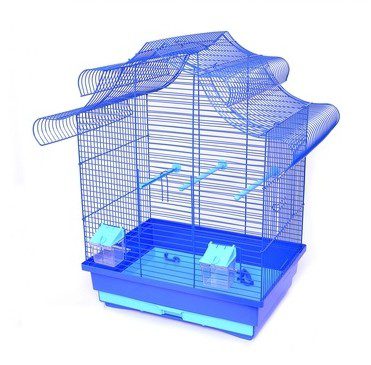 | 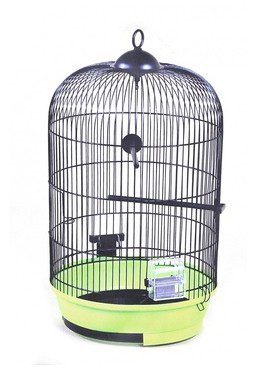 |
– the best option is a rectangular cage with a pull-out tray, in which you can create all the comforts for your budgerigar. It is much easier to correctly distribute toys, feeders and perches when all the walls in the cage are even and the same height. Another plus is that thanks to the straight roof of the cage, you can install a playground for your parrot on top of it, with a small room size, this will help save space and it will be convenient for the bird to return to its native corner after the flight;
An example of photos of rectangular cells:
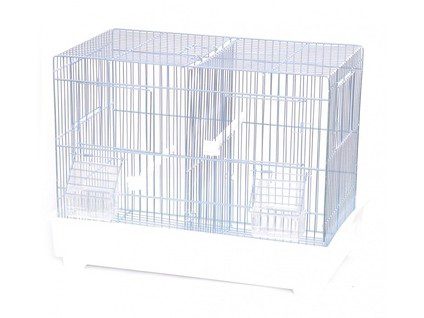 | 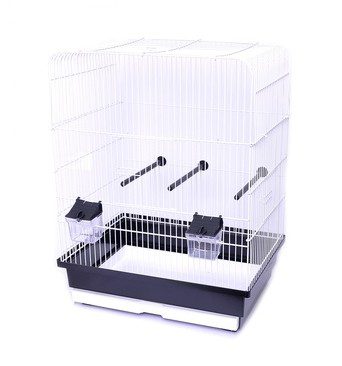 |
Material
It is important to consider what material the cage is made of and what the rods are covered with.
Cages for budgerigars are most often all-metal and combined / wooden – with a wooden base and metal rods. Combined / wooden cages, despite their environmental friendliness and seeming safety, have several important disadvantages: given that budgerigars love to try everything “by the tooth”, they are able to gnaw the wooden partitions of the cage in the shortest possible time, and if misfortune happened and the parrot got sick, then the cage it remains only to throw it away, since it is now completely unsuitable for either the recovered bird or the new tenant. The impossibility of carrying out a complete disinfection and with the likelihood of parasites living in a tree, you will only have to throw out the house. Regular standard hygiene procedures with a wooden cage also have an adverse effect on the material, and after a certain time, a tree gnawed by a parrot and exposure to water make the cage unusable.
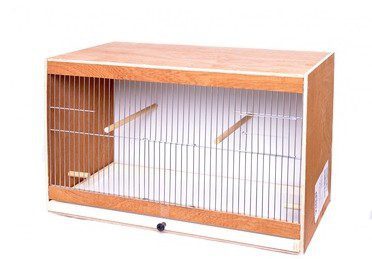
The most popular and reliable are all-metal, they are durable and allow you to keep the home of a parrot in hygiene and, in case of pet illness, they are easily disinfected with chemical or medicinal preparations.
Parrots often gnaw on rods or simply grab them with their beak while moving around the cage. Before buying, pay attention to the metal from which the rods are made, it should not be present: zinc, lead or copper. Most often on sale there are cages with galvanized rods. Zinc is poisonous for birds, so if you bought such a cage, use special plastic clips to fasten vegetables and fruits.
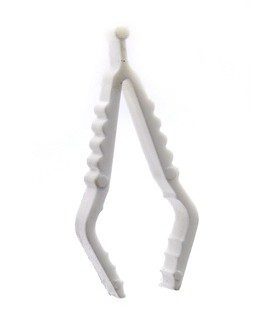
If food is simply clamped between the bars, the budgerigar can get poisoned. There are also cages, the rods of which are painted with enamel paint. In the case of cheap cages, the paint used is of poor quality, there is a risk of flaking, which leads to rust and a threat to the health of the pet. The price of cells is affected by the quality of materials and the brand of the manufacturer.
When buying a cage for a budgerigar, pay attention to what comes in the package. For a full-fledged life, a bird in a cage should have such items per one parrot, but if there are a couple of them, the amount of some equipment is doubled:
– 2-3 wooden perches (depending on the size of the cage);
– three feeders (for grain, berries and juicy food, and for organic sand and mineral supplements);
– automatic drinker;
— bathtub;
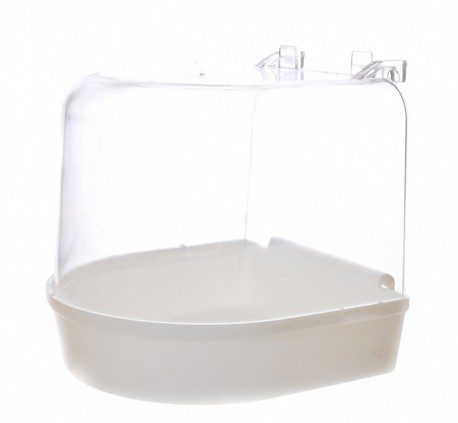
— sepia, chalk;
– a swing or ladder, a bell and a ball (most of the toys can be placed on the game stand);
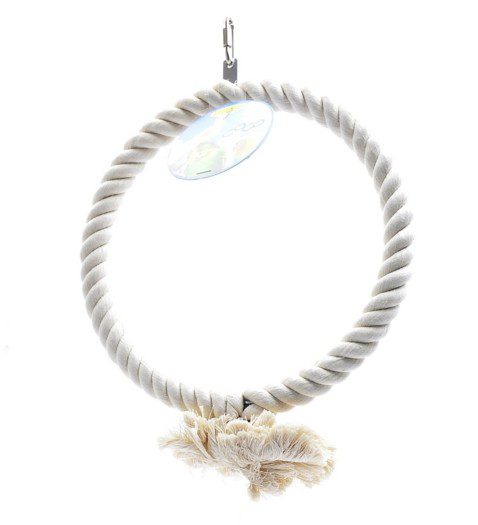
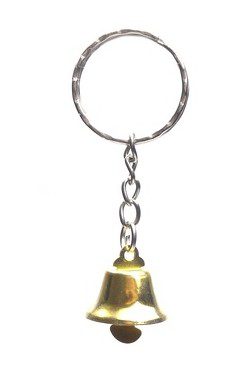
– pull-out tray, which is very easy to keep clean;
– several clips for vegetables, fruits and herbs.
With the widest selection of budgerigar cages available online and with our advice, you can easily choose the one that will be the perfect home for your budgie.



